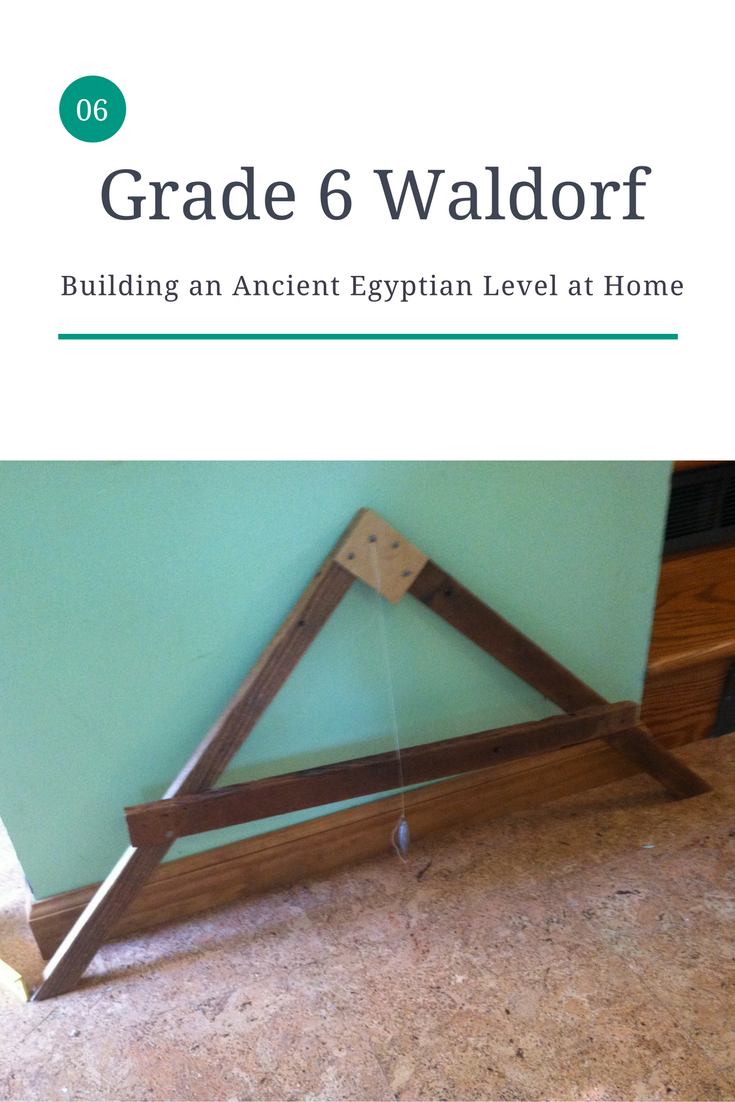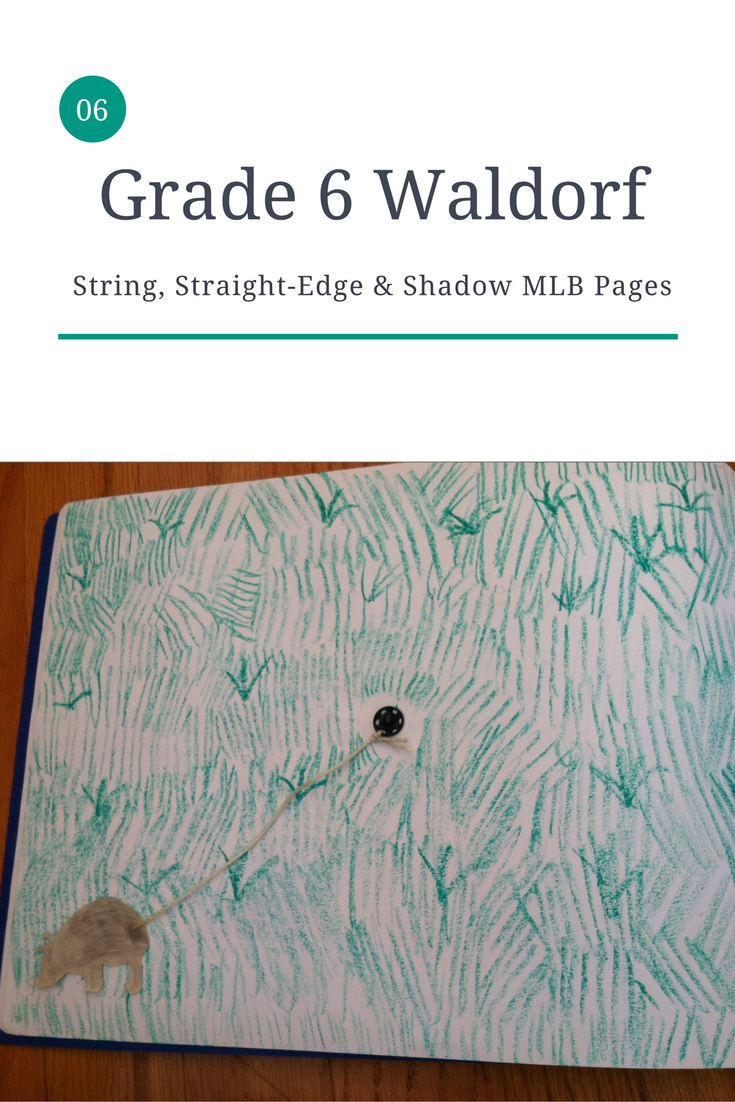String, Straight-Edge & Shadow: The Story of Geometry
updated December 26, 2016
This page has helpful links and LOADS of free resources to help you plan your sixth grade year. Enjoy!
Mission Statement - Consulting Services - Lending Library
String, Straight-Edge & Shadow
for Class 6

Pinterest - Renee Schwartz
My curated collection of visuals! Browse sample main lesson book pages, watercolor paintings, chalkboard drawings, etc. for
Geometry.
MLB Pages - String, Straight-Edge & Shadow: The Story of Geometry (photographs)
my blog post - Natalie's MLB
Second Set of MLB Pages for Geometry (photographs)
my blog post - Becca's MLB

FREE eBooks at the Online Waldorf Library
Excellent resource! Published Waldorf curriculum books provided here in PDF format for you to download, keep, and read... for free!
(images are links to buy these books at Amazon; titles are links to download them for free instead)
Sample Lessons and Free Curriculum
Other Helpful Links
Books to Buy
The books above which are available free through the Online Waldorf Library are all excellent.
For most of our stories I used Julia Diggins's book
String, Straight-Edge & Shadow: The Story of Geometry which is back in print and available through Jamie York's website for $16.95.
I also suggest Compass
Drawings: Construction designs using a compass and a ruler, a well-organized book which was written by a Montessori teacher, for follow-up independent work.
 
 
Recorded here is my own personal collection of articles, resources, favorite links, teaching ideas, and lesson plans. It encompasses many years, from the very beginning of my experience studying and learning about Waldorf to the present time. People from all around the world visit my site and recommend it to others. Welcome!
This site records my journey. I hope my honesty is encouraging and helps break down some barriers that may prevent people from trying Waldorf methods. Because this is an ongoing site documenting my curriculum planning and ideas, some materials are more Waldorf-y than others. Please feel free to take what you like and leave the rest.
Table of Contents & My Notes
read or review The Story of Clocks and Calendars by Betsy Maestro first
PROLOGUE: Three Wonderful Tools
THE BEGINNINGS: Geometry and Nature
1. A Sixth Sense
roll candles, look at a collection of bird nests of various types
2. From the Art Gallery of the Universe
read chapters one and two, revisit straight line
and curve from introductory Form Drawing lesson, take a nature walk with
a bowl and a pair of clippers and collect materials, create a nature table display of geometry in nature
3. Secrets of the Stone Age
drawing the perfect circle, walking round and round a post, or use a nail/board/string - read When Clay Sings
by
Byrd Baylor
IN THE ANCIENT NEAR EAST: Geometry and Daily Life
4. Reading the Shadows
set up shadow experiments - place a brick at the end of a tree's shadow - return a month later at the same time
of day to see if the shadow has moved - also trace your own shadow on the driveway from sunrise to sundown - draw
a new outline every few hours (we think this is obvious but DO NOT skip this)
5. The Rope-Stretchers
create a counting rope for the 3-4-5 triangle (honestly, pompom yarn is the easiest way to do this)
walk the yard to see the low parts where the water puddles, crops that are too wet will die / crops that are too dry will die, build Ancient Egyptian level (see my blog post for directions and photos)
measure the length of your yard in cubits
6. The Star-Gazers
divide 360 by 1 through 20 FIRST, make a chart (Native American Geometry Workbook: Howdy!) have blank paper and a compass and colored pencils ready, color in each petal of the
flower as you make it so that you can see if they are coming out the same size - begin compass drawing book for follow-up work, also Native American geometry workbook, and/or
begin reading Carry On, Mr. Bowditch
THE IONIAN GREEKS: Geometry and Thought
7. The 6th Century B.C.
8. Thales at Home and Abroad
9. How High is the Pyramid?
BEFORE this chapter, do Hands-On Math: Ready to Use Games & Activities
for Grades 4-8 "Develop the ratio concept and equivalent ratios or proportions," with pages 69 (Building Ratios), 71 (Comparing Circles to Triangles), 74 (Ratios in Advertising)
You can also follow up on the illustrations of the Egyptians doing art with "Explore proportions through reductions and enlargements," with pages 397 (Look-Alikes), 398 (Inca Bird Designs), 399 (Mystery Kingdoms)
I combined chapters 7, 8, and 9 and did one day on Thales, using the biography in Mathematicians are People, Too - the donkey
and the salt story is also found in Aesop's Fables by Ann McGovern on page 59
10. The Rules of the Game
THE SECRET BROTHERHOOD: Geometry, Mathematics, and Magic
11. Pythagoras and His Followers
read How We Learned the Earth is Round
- have one person stand at one end of a hallway which has steps leading up to it, have another person go down to the bottom of the steps and then
slowly walk up them, then walk back down them - compare to going out to a large flat field and have the two people stand at opposite ends and one
walks towards the other
12. A Famous Theorem
have graph paper ready and use colored pencils draw 3 - 4 - 5 triangle and complete the diagram
of the squares of each side before reading this chapter, also have ready a list of other Pythagorean
triples so they can complete two more during the chapter to see that it really does work (actually
repeat the graph paper proof with another sized square - we think this is obvious but DO NOT skip this) (5-12-13,
7-24-25, 8-15-17, 9-40-41)
13. "Dice of the Gods"
14. The Unspeakable Tragedy
Pythagoras biography in Mathematicians are People, Too
FROM THE ACADEMY TO THE MUSEUM: Geometry, Art, and Science
15. The Golden Age and the Golden Mean
16. A Royal Road, After All
stop at bottom of page 141, give them blank paper to draft their ideas to defend the city of Syracuse, pretend
they are Archimedes - for story of Eureka actually get a large bowl of water and fill it really full and pretend
you're going to drop a brick in
I would also love to get this dissectible wood cone which
comes apart to show the conic sections of a circle, ellipse, parabola, and hyperbola.

17. The Whole, Round Earth!
read the story The Librarian Who Measured the Earth
by Kathryn Lasky - it's also helpful to have a grapefruit handy
My blog posts from teaching this topic:
September 2015
- Have Good Geometry Hunting!
- The Perils of Assessment
(This post includes some of Natalie's exit slips from this block. One of the things I did in her Geometry block
was have her fill out a little slip of paper each day with one question she still had... and put it in a little jar so
that I could review it in the evening and see where her misconceptions lay. For some reason, it is easier for children
to do this at times than to raise their hand and interrupt or slow down a lesson. Having to write the question
down also lends it some weight. You don't just write down any old quick thing, like you might if the teacher called
on you and put you on the spot. The question requires some real thought.)
- MLB Pages - String, Straight-Edge & Shadow: The Story of Geometry (photographs)
August & September 2016
Agnesi to Zeno: Over 100 Vignettes
from the History of Math also has helpful biographies and activities for this block (pages 15-34) as
well as mathematics concepts for later grades.
 
|